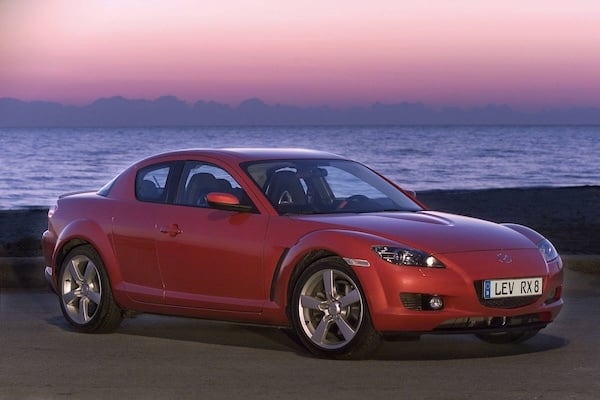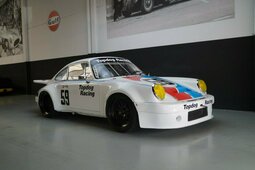The year 1967 marked a pivotal moment globally, as nations gripped by space fever embarked on constructing spacecraft, aiming for stellar conquests beyond Earth's confines, all while casting competitive glances, each aspiring to be the pioneer in space exploration.
Japan's Mazda contributed to this era with the launch of the Mazda Cosmo, the brand's inaugural vehicle powered by a rotary (or Wankel) engine, named after its inventor, Felix Wankel. The Cosmo, heralding Mazda's commitment to innovation, was a nod to the space age dominating global headlines, underscoring the company's belief in the future of rotary engine technology.
One Per Day
In 1964, a sleek prototype was unveiled at the Tokyo Motor Show, making waves shortly after the NSU Spider—the pioneering Western vehicle to incorporate the Wankel engine—debuted at the Frankfurt Motor Show. Between 1965 and 1966, a limited series of 80 prototype models was produced.
The transition to mass production kicked off in 1967, continuing until 1972. The initial marketing brochures set a confident tone: “When evaluated by engine size, weight, and cost, the 110S outpaces and outperforms any other vehicle globally.” The Cosmo boasted acceleration to 100 km/h in just around nine seconds, and the export versions were dubbed the 110S.
Although a five-year production span might yield thousands of cars today, the Cosmos were meticulously hand-assembled, resulting in only about one coupé departing the factory daily. Precisely, 1,519 first-generation models, identified as L10A and L10B, were crafted during this period.
The L10A variants were powered by a two-rotor, 110-hp, 1-litre engine. This configuration was particularly appealing in Japan, where owning a Cosmo with a rotary engine meant accessing greater power than that offered by traditional engines of comparable size without incurring the tax penalties associated with higher-capacity engines.
Referred to as Series I models, the L10A Cosmos were limited in production; by 1968, only 343 units had been manufactured. For a car in relatively good shape, expect to pay around USD 140,000. However, a pristine white coupé fetched USD 264,000 at a Gooding & Company auction. Prices for a Cosmo requiring restoration range between USD 60,000 and 70,000, with most sellers located in the Far East.
Endurance Race
The Series II (L10B) models received an upgrade to a more robust 128-hp engine paired with a five-speed manual gearbox, a notable improvement over the previous version's four-speed automatic. Additionally, the wheelbase was extended by 38 cm to increase cabin space. These enhancements enabled the Cosmo to surpass 190 km/h and shave a few seconds off its drag race times compared to the earlier model.
To demonstrate the rotary-powered coupé's reliability, Mazda entered the 1968 Marathon de la Route at the famed Nürburgring circuit in Germany. Two Cosmos lined up for the grueling 84-hour endurance race. In the closing hours, the team from Japan had to withdraw one Cosmo, but the other, manned by a Belgian crew, crossed the finish line in fourth place.
Racing aficionados weren't the only ones captivated by this sporty vehicle. Comedian and talk show host Jay Leno is the proud owner of a 1970 L10B. In 2006, the American Speed Channel spotlighted his car in an episode of the "My Classic Car" series, believing it to be the sole Cosmo in the United States at that time.
In 2007, however, Mazda's US division discovered and acquired another Cosmo. Leno has described his car as very special and "ahead of its time".
A 1970 Cosmo reportedly fetched USD 110,000 at a Bonhams auction in 2015.
It's important to note that Cosmos were originally not marketed outside Japan, posing challenges for Western restorers in sourcing parts. While some components may still be available through Mazda dealerships, and others find their way to Japanese car auctions, securing these parts is often a costly endeavor.
Lost Its Name
The second generation Cosmo, known as the CD Series, was produced from 1975 to 1981. In Western markets, this rotary engine model was branded as the RX-5, while versions equipped with standard engines were marketed as the Mazda 121. In Japan, it bore the AP (Anti-Pollution) designation, highlighting its relatively eco-friendly status. This iteration of the Cosmo saw tremendous success in Japan, with sales exceeding 50,000 vehicles in its debut year. However, the reception in export markets was lukewarm, as consumers there were leaning towards vehicles that were cheaper and lighter. Locating a Cosmo from this era in the West is rare, as the market's preferences at the time were shifting, evidenced by the mere 35,000 Mazda models sold in 1976, among which only a handful were Cosmos.
Together with the second generation, Mazda's rotary models lost the Cosmo name in Western markets. The latter was left for the local Japanese market. Thus, the third-generation Cosmo marked with the HB code and produced in 1981–1989 had twin brothers: the 929 and the Luce. In addition, the HB series was the only one in the world where buyers had a choice of gasoline, diesel or rotary engines.
Mazda developed three distinct rotary engines for the HB models: the 12A, the 12A-turbo, and the 13A. The 13A engine was paired exclusively with an automatic transmission. Moreover, the 1982 12A-turbo Cosmo stood out as the fastest production car available in Japan until the emergence of the Nissan R30 Skyline RS overtook it.
The Luxury Segment
Beginning in 1990, Mazda incorporated the term "Eunos" into the Cosmo's name, signifying the Mazda Auto dealership network where the Eunos Cosmo models could be acquired. The JC series coupé, featuring a 2+2 seating arrangement, was marketed as a luxury vehicle equipped exclusively with a triple-rotor engine and a four-speed automatic transmission.
The Eunos Cosmo was met with disfavor in Japan due to its non-compliance with the Japanese Government's dimension regulations. As a result, owners faced the burden of higher taxation.
Mazda introduced two variants of rotary engines for this final Cosmo generation, which continued production until 1996. One engine featured a twin-turbo setup, while the other boasted a two-liter displacement delivering 300 horsepower. This last iteration of the Cosmo established several milestones for Mazda. It marked the first instance in the automotive world that twin sequential turbo systems were utilized for a rotary engine. Additionally, it was the inaugural production car to be equipped with a built-in GPS navigation system. Furthermore, it was the first vehicle in Japan to implement the PALMNET data communication system for connecting the ECU to the ECAT.
By 1995, Mazda had manufactured a total of 8,875 Eunos Cosmo coupés, with those featuring the 2-litre rotary engine being less common, hence more sought after and valuable. Owing to the decision against exporting this model, the Eunos Cosmo was primarily available in countries with left-hand traffic rules. Currently, acquiring the final model of the Cosmo with a 2-litre rotary engine might cost around USD 15,000, a notable figure considering that only about 3,000 units of this engine variant were produced.
---
Embark on a journey to find your ideal vehicle by browsing through our Car Categories. Or, delve into our Classic Passion Shop for an exciting array of products from our partners, perfect for enthusiasts looking to enhance their collection!

















